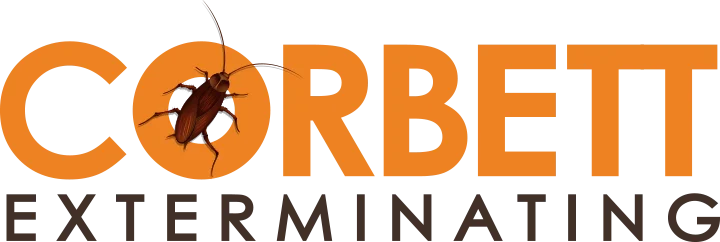Pest Control Without the Worry: Family- and Pet-Safe Solutions for a Healthy Home

When it comes to protecting your home from pests, safety often becomes the highest priority—especially for families with young children and pets. At Corbett Exterminating, we understand that peace of mind means more than just eliminating unwanted bugs and rodents; it means doing so without compromising the health of your loved ones. This guide covers everything families need to know about safe, effective pest control solutions that protect homes while keeping children and pets safe. It also explains how professional pest management can be both responsible and powerful during peak pest seasons in the Northeast and Southeast regions we serve.
Why Families Worry About Pest Control Safety
The concern about toxins and chemicals in pest control is well-founded. Children and pets are more vulnerable to environmental hazards due to their smaller size and developing bodies. National surveys confirm that a majority of pet owners and parents actively seek pest control options that prioritize safety for kids and animals. The American Housing Survey reflects this trend, showing increased consumer focus on health-conscious pest control options (American Housing Survey Overview).
Common worries include:
- Exposure to pesticide residues on floors and furniture where pets and toddlers crawl.
- Accidental ingestion or contact with toxic sprays or baits.
- Potential long-term health impacts from repeated pesticide exposure.
Corbett Exterminating prioritizes environmentally responsible methods and implements the safest treatment protocols, specifically designed for family homes.
What Makes Pest Control Safe for Children and Pets?
Safe pest control involves an integrated approach that reduces overall chemical use while leveraging targeted, low-toxicity solutions combined with preventive tactics.
Key strategies include:
- Use of EPA-Registered Low-Toxicity Products: These products are evaluated and approved by the Environmental Protection Agency for safety when applied according to label instructions. Many modern pest control formulations utilize botanical insecticides and baits that present minimal risk to humans and pets if properly used (EPA Minimum Risk Pesticides).
- Targeted Application: Treatments are applied strategically to pest entry points, baseboards, and nesting sites rather than indiscriminate spraying, limiting non-target exposure.
- Physical Barriers and Exclusion: Excluding pests through sealing cracks, using door sweeps, and repairing screens reduces the need for chemical interventions.
- Non-Chemical Methods: Methods such as traps, pheromone monitoring, and sanitation focus on pest reduction without introducing chemicals.
- Clear Post-Treatment Guidelines: Corbett’s technicians provide clear instructions regarding re-entry times and tips to further limit family exposure after treatments.
Natural and Non-Toxic Pest Deterrents: What Homeowners Can Use
Many families gravitate toward natural pest deterrents to complement professional management and minimize chemical use:
- Diatomaceous Earth: A natural, silica-based powder that physically damages insect exoskeletons; safe for indoor use when food-grade quality is selected (NPIC on Diatomaceous Earth).
- Essential Oils: Oils such as peppermint and citronella have repellent effects against ants, spiders, and mosquitoes when used appropriately (University of Maryland Extension: Essential Oils).
- Boric Acid: Utilized primarily as a bait, boric acid is an effective, low-toxicity option against cockroaches and ants when used safely (National Pesticide Information Center: Boric Acid).
While these methods can support reducing pest presence, they are typically not sufficient for treating established infestations, especially during peak seasonal pest activity (Cornell IPM Program).
Why Professional Pest Control Is Essential for Families
Seasonal surges of ants, spiders, wasps, and rodents, especially in spring and fall, require professional strategies:
- Comprehensive Inspections: Professionals detect hidden pest habitats and routes that families may miss.
- Customized Treatment Plans: Pest control technicians tailor treatments to unique home environments and family safety needs.
- Expertise and Training: Technicians bring best practices to ensure children and pets are protected during and after treatments.
- Satisfaction Guarantees and Follow-Up: Corbett Exterminating provides revisit services to maintain pest-free environments with minimal chemical exposure.
Practical Tips for Families to Increase Pest Treatment Safety
- Remove toys, food, and pet dishes from floors during treatments.
- Communicate any allergies or sensitivities with the pest control provider.
- Store pest baits or traps securely to prevent accidental contact.
- When possible, schedule treatments while children are at school and pets are temporarily relocated indoors or outdoors as directed.
Protect Your Family with Corbett’s Safe Pest Control Solutions
Safety and efficacy combine in Corbett Exterminating’s family-focused pest control. Serving New Jersey, Mississippi, New York, and Pennsylvania, we offer a full range of environmentally mindful pest solutions that protect your home and loved ones.
Reach out today to schedule a safe, tailored pest control consultation and seasonal treatment plan designed with your family’s health as our priority!
Sources:
- American Housing Survey. “American Housing Survey Overview and Data.” U.S. Census Bureau, 2024, https://www.census.gov/library/stories/2021/04/how-many-american-homes-have-pests.html
- Environmental Protection Agency. “Minimum Risk Pesticides.” EPA Office of Pesticide Programs, 2023, https://npic.orst.edu/ingred/lowrisk.html.
- National Pesticide Information Center. "Diatomaceous Earth." Oregon State University Extension Services, 8 Oct. 2023, https://npic.orst.edu/ingred/de.html.
- University of Maryland Extension. “Essential Oils for Mosquito Control.” Maryland Grows, 14 May 2018, https://marylandgrows.umd.edu/2018/05/14/essential-oils-for-mosquito-control/.
- National Pesticide Information Center. “Boric Acid.” Oregon State University, 2024, https://npic.orst.edu/factsheets/boricgen.html.
- Cornell University New York State IPM Program. “Integrated Pest Management Methods.” NYS IPM, 2024, https://nysipm.cornell.edu/.
